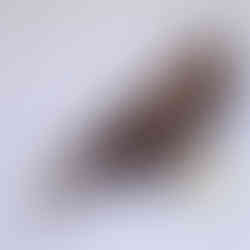Using & Maintaining Fountain Pens
Fountain pens are a classic writing instrument that dates back to the early 19th century. With their elegant design and smooth writing experience, fountain pens have become a symbol of sophistication and style. If you're new to using fountain pens, this blog post will guide you through the basics of how to use and maintain them.
Using a Fountain Pen
1. Choose your pen
There are many different types of fountain pens on the market, ranging from affordable options to luxury brands. When choosing a fountain pen, consider the nib size, material, and ink cartridge or converter. If you're unsure where to start, a medium nib is a good all-around choice.
2. Prepare your pen
If your pen is new, you'll need to prime the ink feed by filling the converter or cartridge with ink. To fill a converter, twist the end of the pen to expose the converter, dip the nib into ink, and turn the converter's piston to draw ink into the pen. To fill a cartridge, insert the cartridge into the pen and twist the end of the pen to puncture the cartridge.
3. Hold your pen correctly
Hold your pen between your thumb and index finger, with your middle finger resting on the pen's barrel for support. The nib should be angled slightly towards the paper for optimal ink flow.
4. Write with a light touch
Fountain pens don't require much pressure to write, so write with a light touch to avoid damaging the nib. Use smooth, fluid strokes to let the ink flow naturally onto the paper.
Maintaining a Fountain Pen
1. Clean your pen regularly
Fountain pens should be cleaned regularly to maintain optimal performance. To clean your pen, flush it with warm water to remove any ink residue. If your pen is particularly dirty, you can use a pen flush solution to clean the ink feed.
2. Store your pen properly
When not in use, store your pen in a cool, dry place to prevent the ink from drying out. Avoid storing your pen in direct sunlight or near sources of heat or moisture.
3. Replace ink cartridges or refill converters
When your ink cartridge runs out, replace it with a new one. If you're using a converter, refill it with ink as needed. Be sure to choose ink that is compatible with your pen's material and nib size.
4. Maintain the nib
If your nib becomes scratched or damaged, it may need to be repaired or replaced. Avoid touching the nib with your fingers, as this can leave oils that can interfere with the ink flow. If you're unsure how to maintain your nib, consult with a professional pen repair technician.
In conclusion, using and maintaining a fountain pen requires a bit of care and attention, but the rewards are worth it. With proper maintenance and use, your fountain pen can provide a smooth, elegant writing experience for years to come.


























































Comments